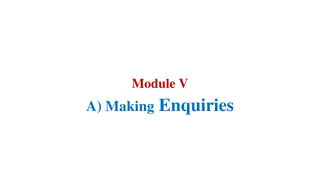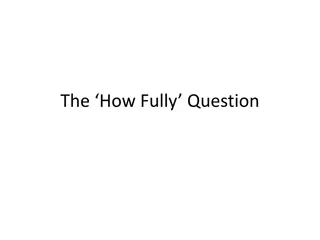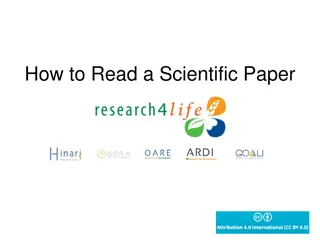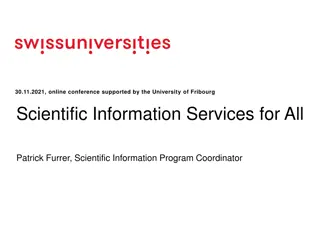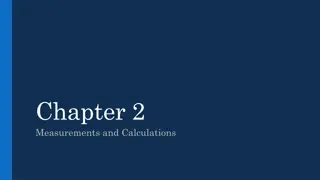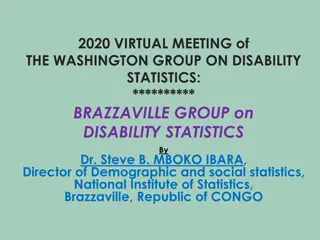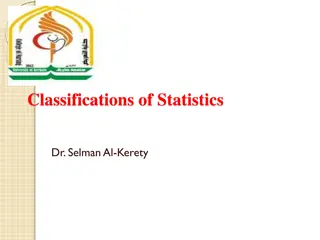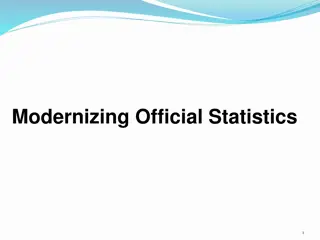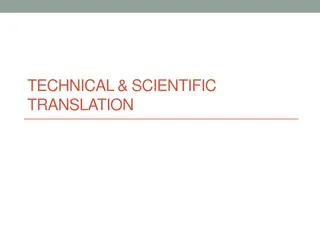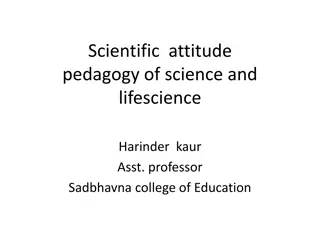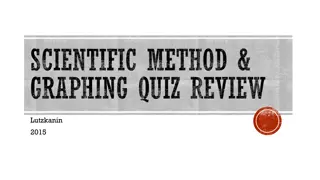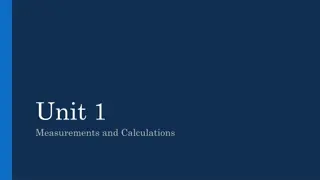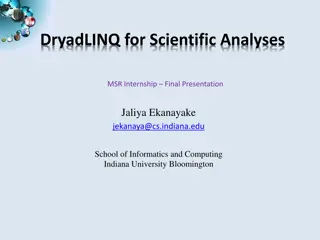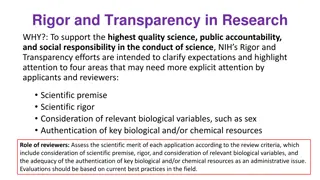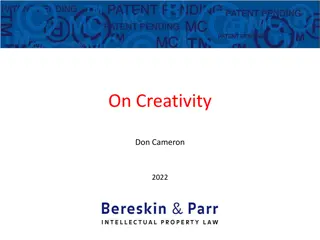Understanding the Importance of Statistics in Scientific Enquiry
Statistics plays a crucial role in scientific research, from planning to conclusion. It involves the systematic collection and analysis of numerical data to make informed decisions. Various definitions and scopes of statistics are discussed, highlighting its significance in areas like planning, forecasting, and data interpretation across different fields of study.
Download Presentation

Please find below an Image/Link to download the presentation.
The content on the website is provided AS IS for your information and personal use only. It may not be sold, licensed, or shared on other websites without obtaining consent from the author. Download presentation by click this link. If you encounter any issues during the download, it is possible that the publisher has removed the file from their server.
E N D
Presentation Transcript
AGB (Unit I) Biostatistics & Computer Application RAKESH GOEL Department of Animal Genetics & Breeding, College of Veterinary Science and Animal Husbandry, U.P. Pt. Deen Dayal Upadhyaya Pashu Chikitsa Vigyan Vishwavidyalaya Evam Go-Anusandhan Sansthan, Mathura 281001 (U.P.) E-mail : goelrakeshvet@gmail.com 1
The wordStatisticsseems to have been derived from the Latin word Status or the Italian word Statista or the German word Statistik ,each of which means a Political State . In ancient times in India, an efficient system of collecting official and administrative statistics existed during the region of Chandra Gupta Maurya (about 300 BC). But, in modern came during the mid-seventeenth century with the introduction of Theory of Games and Chance .
There have been many definitions of the term Statistics which can be broadly classify in two sense: Statistics in plural sense: It is used for numerical facts systematically collected with some definite objects in view, in any field of enquiry, whatsoever of observation, measurement or experiments. Statistics in singular sense: It is a science which investigates the statistical methods and deals with their application.
Statistics has been defined by different authors from time to time. These are some authors to define statistics as per their time and requirement. According to Bowley - "Numerical statements of fact in any department of enquiry placed in relation to each other . According to Boddington - "Statistics is the science of estimates and probabilities . According to King - "The science of statistics is the method of judging, collective, natural or social phenomenon from the results obtained from the analysis or enumeration or collection of estimates . According to Prof. A. Seligman, Statistics is the science which deals with the application and methods of collection, classification, comparison, presentation, analysis and Interpretation of data in any spare of enquiry . Which is the most comprehensive definition of statistics.
The scope of statistics is indeed very vast. It covers all fields of study wherein quantitative data appear and need analysis. Statistics is an indispensible tool for any scientific enquiry-right from the state of planning to the stage of conclusion. Some important areas, in which statistics used- Statistics and Planning: Statistics is indispensable in planning. Planning is necessary for efficient workmanship and in formulating future policies. Statistics provides the valued interpretation of facts and figures relevant to planning. Planning depends on forecasting the future. Statistics provides the necessary tools of estimation and forecasting.
Statistics and Economics: Statistics are the straws out of which Economists have to make bricks . Statistics indispensable in economic studies. Statistical data and their analysis are used to solve a variety of economic problems such as in consumption, production, distribution of income and assets, poverty, unemployment etc. These problems are described, compared and correlated by using statistics. Use of statistics in Economics has led to the formulation of many economic laws like Engel s law of consumption, Pareto s Laws of distribution of income etc. Similarly statistical tools like index numbers are sued as economic barometers. Statistics and Administration: In ancient times statistics was used as the science of statecraft. It was used to collect data relating to manpower, crimes, income etc. for formulating different policies. In modem times, its role has become manifold. It has become indispensable for the administrators. It is being widely used formulating and forecasting different plans and policies of the state administration.
Statistics and Business: Statistical knowledge is very helpful to the businessman. He formulates different plans and policies using statistics. It helps him in forecasting the future trends and tendencies. To estimate the market fluctuations, changes in the demand conditions etc. statistical techniques are often used. Hence for becoming a successful businessman, ideas in statistics are essential. Business manager take decisions in the face of uncertainty. Statistical tools like collection classification, analysis and interpretation of data are essential in business-management. The success of modem business primarily depends on accurate forecasting of the future demand and mark trends. For this statistics is essential. Hence statistics is widely used in business management. Statistics and Research Activities: One cannot think of undertaking any research activities without using statistics. Primarily, statistical techniques are used for collecting information in any research. Besides, statistical methods are used for analysis and interpretation of research findings. Thus there is hardly any branch of study where statistics is not being used. It is used in all spheres of human activities.
The following are the important limitations of the statistics: It does not deal with individual measurements It deals only with quantitative characteristics Statistical results are true only on an average Statistics used by an expert give true result All statistical conclusions are true when they are based on normal observations.
Population It is used to denote a well defined set, group or aggregate of observations relating to a phenomenon under statistical investigation. A population can be finite or infinite according as the set contains a finite or infinite number of observations. Attributes Qualitative observations of elementary units are called attributes. They may often be expressed numerically. Parameter The numerical quantities which characterize a population are called parameters. In other words, a parameter is a descriptive measure of some characteristics of the population. Statistic The term Statistic is used to denote any quantity that is calculated from sample data. Thus, a descriptive measure computed from sample observations is called a Statistic. 9 9
Constant A variable whose domain contains only one value is called a Constant. Variable The characteristic on which individuals or objects differ among themselves is called a variable. For example, Height, weight, age, sex, etc. A variable may be Qualitative or Quantitative in nature. In case, qualitative variable is un-measureable with a scale and as such is un-expressible in magnitudes. For example, Sex, nationality, religion, literacy, measurement of a variable is possible on a scale in some appropriate unit, it is called a quantitative variable. There are two types- Discrete or discontinuous variable: It varies only by finite 'jumps' or 'breaks' and can assume finite values in a finite interval. Continuous variable: It can theoretically assume infinite values within an interval. The values of a continuous variable have no 'jumps' or 'breaks'. etc. Whereas, the
It deals with the application of statistics to the biological data. It is also called 'Biometry'. Francis Galton (1822-1911) is called the "Father of Biostatistics". W.F.R. Weldon (1860-1906) coined the term 'Biometry'. Biostatistics covers contribution not only biotechnology, medicine and nutrition but also from fields such as agriculture, genetics, biology, biochemistry and many others. application from and health, 11



